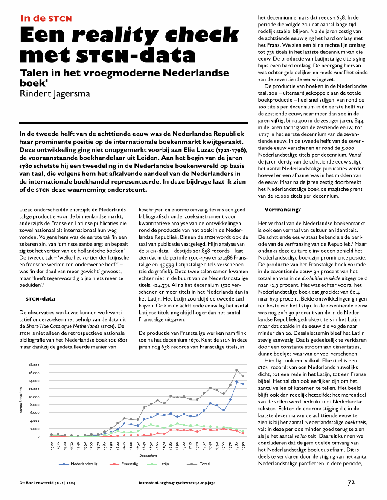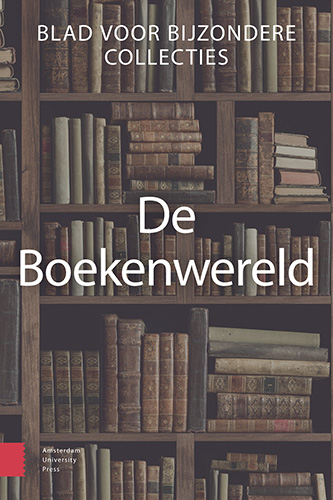

Rindert Jagersma
Een reality check met STCN-data. Talen in het vroegmoderne Nederlandse boek
In: De Boekenwereld, 40:1 (2024), pp. 72-73.
Website: https://www.aup-online.com/content/journals/01688391/40/1
DOI: https://doi.org/10.5117/DBW2024.1.019.JAGE
Link: https://www.aup-online.com/content/journals/10.5117/DBW2024.1.019.JAGE
Abstract:
In de tweede helft van de achttiende eeuw was de Nederlandse Republiek haar prominente positie op de internationale boekenmarkt kwijtgeraakt. Deze ontwikkeling ging niet onopgemerkt voorbij aan Elie Luzac (1721-1796), de vooraanstaande boekhandelaar uit Leiden. Aan het begin van de jaren 1780 schetste hij een tweedeling in de Nederlandse boekenwereld op basis van taal, die volgens hem het afkalvende aandeel van de Nederlanders in de internationale boekhandel representeerde. In deze bijdrage laat ik zien of de STCN deze waarneming ondersteunt.
This article is open access available: PDF (0,2 MB)
English:
A reality check with STCN data. The languages of the early modern Dutch books
[This article is in Dutch]
Specials thanks to Marieke van Delft, Esther van Gelder and Sylvia van Zanen.
Illustrations:
Pieter Bruegel de Oude, De Toren van Babel (1563) (Google Art Project)